Extreme Heat
- Get Prepared
- Nature Safety
- Current: Extreme Heat
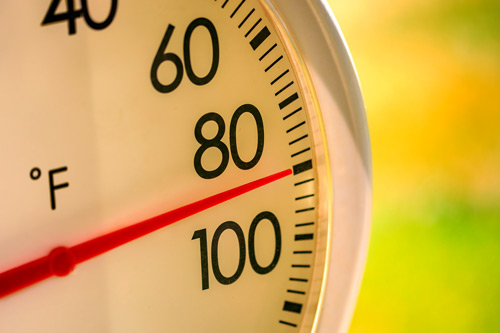

Extreme heat occurs when temperatures reach 90 degrees Fahrenheit or higher for at least two to three days. The National Oceanic and Atmospheric Administration reports 2023 was the warmest year on record globally, and there is a worldwide trend of warmer than average temperatures. Overexposure to heat can be hazardous, and the humid conditions frequently experienced in Indiana can add to the discomfort and danger of high temperatures.
Extreme Heat Safety Tips
Quick Tips
- Use air conditioning or reflective materials in windows to help keep the house cooler.
- Watch for the symptoms of heat-related illnesses and seek medical attention as necessary.
- Drink fluids regularly, regardless of the activity level.
- Wear loose-fitting, light-colored clothing.
- Avoid strenuous activities.
Watch vs. Warning
- Excessive Heat Watch: Issued when conditions are conducive for dangerous heat conditions within the next 24 to 72 hours.
- Excessive Heat Warning: Issued within 12 hours of the onset of dangerous heat conditions.
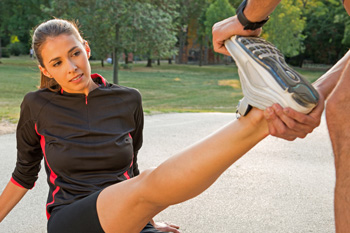
Heat Cramps
The first sign that the body is not dealing well with the heat is cramping. This is the least dangerous form of heat illness, and small changes can reverse the symptoms.
Symptoms
- Body temperature begins to rise (up to 102 degrees Fahrenheit)
- Flushed appearance
- Muscular spasms in the abdomen or legs
Treatment
- Move to a shaded area or a cool place and rest.
- Put cold rags on the wrists, neck and face.
- Stretch if you have a cramp.
- Drink water or a sports drink. Do not drink caffeinated beverages because they can dehydrate the body more quickly.
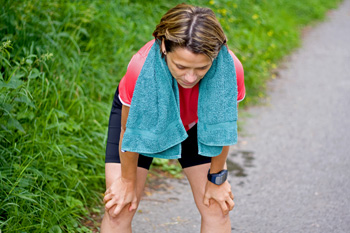
Heat Exhaustion
Heat exhaustion occurs when the body sweats and loses water and salt. If they are not replaced, the body cannot cool itself, which may cause heat stroke.
Symptoms
- Body temperature over 102 degrees Fahrenheit
- Excessive sweating
- Faint feeling
- Flushed appearance
- Muscle cramps
- Nausea or vomiting
- Rapid, weak pulse
Treatment
- Drink water or a sports drink. The electrolytes in sports drinks will help rehydrate the body.
- If there is no improvement, or if the person cannot drink fluids, take them to an emergency room immediately.
- Move to a shaded area or a cool place and rest.
- Put cold rags on the wrists, neck, face, armpits or groin area.
- Stretch if muscle cramps occur.
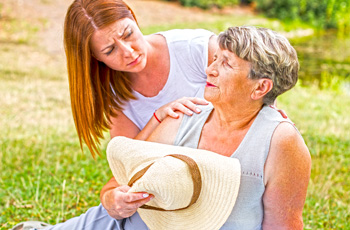
Heat Stroke
The most severe of all heat-related illnesses is heat stroke, and it occurs when the body can no longer cool itself. It’s a very serious condition and could possibly result in death if immediate action is not taken.
Symptoms
- Body temperature over 103 degrees Fahrenheit
- Confusion or dizziness
- Headache
- Nausea or vomiting
- No sweating
- Possible unconsciousness
- Rapid, strong pulse
- Warm skin
Treatment
- Move to a shaded area or a cool place to rest.
- Put ice under the person’s armpits and on the groin area.
- Drink water or preferably a sports drink. Avoid caffeinated drinks because they will quicken the body’s dehydration.
- If there is no improvement, the body temperature does not decrease or the individual cannot or will not consume fluids, go to an emergency room immediately or call 911.
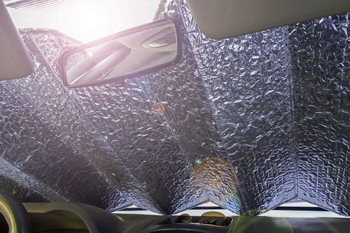
Preparation
In some cases, small changes can help battle against extreme heat conditions.
- Use cardboard or a reflective material in windows to reflect the sun’s rays. This will help keep the space slightly cooler. Covering house windows with drapery can help keep heat from entering the home.
- Install weather stripping around doors and windows to help keep warm air out and cool air inside the home. Adding insulation may also help.
- If possible, add window air conditioning units to keep cool air circulating in the home.
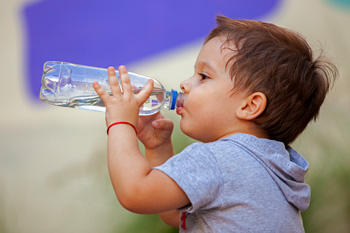
During a Day of Extreme Heat
Heat is the top weather-related killer in the United States. According to the National Weather Service, heat causes more fatalities each year than floods, lightning, tornadoes and hurricanes.
- Avoid strenuous activities when hot weather is expected.
- Stay hydrated and nourished. Drink fluids regularly, regardless of the activity level. Avoid sugary, caffeinated and alcoholic beverages because they increase the rate of dehydration.
- Eat small meals more frequently. Although heat may lessen appetites, the body needs proper nutrition to function.
- Take time to cool off. If possible, stay indoors in an air-conditioned building. If the home does not have air conditioning, spend time in an air-conditioned public facility. Check local news to see if there are any local heat-relief shelters.
- Never leave animals, children or elderly individuals inside a vehicle. The temperature inside vehicles can quickly become dangerously high even if the windows are rolled down completely.
- Dress appropriately for the high temperatures. Wear loose-fitting, light-colored clothing. Light colors reflect heat better than dark colors.
- The skin and eyes also need to be protected. Wear the proper level of SPF sunscreen, a hat and sunglasses. This will protect the body from harmful ultraviolet rays.
Resources
Websites
- Preventing Heat-Related Illness
Centers for Disease Control and Prevention - Protecting Children From Sunburn
American Academy of Pediatrics - Skin of Color: How to Protect and Detect Skin Cancer
American Academy of Dermatology - UV Index Forecast
Environmental Protection Agency
